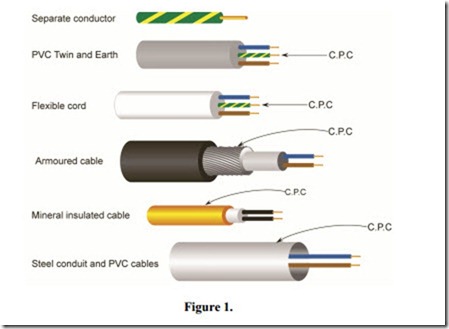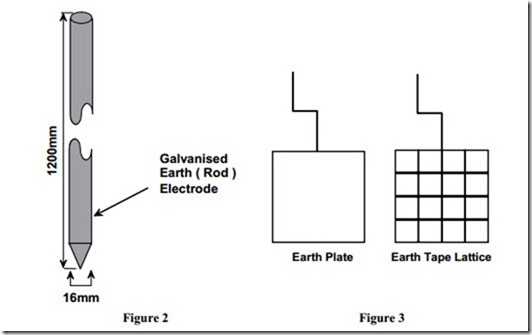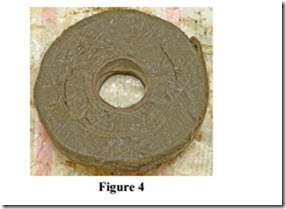Earthing
Earthing is defined as “The connection of the exposed conductive parts of an installation to the main earthing terminal”.
Main Earthing Terminal
Every installation must have a main earthing terminal. In domestic installations it is usually a brass bar located at the top, bottom or side of the distribution board. It should have a suitable range of terminals for all the conductors required to be terminated.
The following conductors may be connected to the main earthing terminal:
1. The Main Protective Conductor in TN systems
2. Earthing Conductor
3. Functional Earthing Conductors ( communication systems )
4. Main Equipotential Bonding Conductors
5. Protective Conductors
The main earthing terminal must be easily accessed. This is primarily to allow disconnection of any of the above conductors as required when testing the installation.
Main Protective Conductor
The main protective conductor connects the DSO neutral to the consumer’s earth electrode via the main earthing terminal. It is commonly called the Neutralising Conductor. It must be insulated and have the same cross-sectional area as that of the earthing conductor if both are manufactured from the same material. If made from different materials they must have an equivalent current carrying capacity.
Earthing Conductor
The earthing conductor must have green / yellow insulation over a copper conductor. It connects the earth electrode to the main earthing terminal. The cross-sectional area of this conductor ( SE mm2 ) is dependent on the cross-sectional area of the largest phase conductor in the installation ( S mm2 ), in accordance with the ETCI Rules.
· S = The cross-sectional area of the largest phase conductor.
· SE = The cross-sectional area of the earthing conductor.
Where the cable is exposed it should be protected by either steel or heavy duty PVC conduit or piping.
Protective Conductor
All circuits unless specifically designed for a non-conducting location will have a protective conductor ( PE ) included. They must be capable of carrying the maximum possible earth fault current to the DSO neutral, via the main earthing terminal.
They only have to carry this fault current for the time required to operate the circuit protective device. In general, this time will not exceed five seconds. In the event of a fault, they prevent exposed conductive parts becoming live with respect to earth.
The protective conductor may be a:
· Separate conductor
· Cable core
· Cable armour
· Metallic conduit
· Metallic trunking See Figure 1.
Earth Electrode
The earth electrode can be any of the following types
· Earth rods or pipes
· Earth tapes or wires
· Earth plates
· Metallic reinforcement of concrete foundations buried in the ground may also serve as an earth electrode.
The galvanised earth electrode above is generally sufficient for a domestic installation. The ETCI Rules cover more specific requirements for types of earth electrode.
Function of the Earth Electrode
The function of the earth electrode is to maintain a connection between the general mass of earth and metallic parts of the consumer’s installation. These can then be regarded as being at zero potential. The earth electrode must be continuously effective and capable of carrying earth leakage and earth fault currents, which may arise.
The effectiveness of an earth electrode in conducting fault currents will depend on its contact with earth. Its contact with earth will vary depending on the type of soil in the area. The soil may be heavy sticky soil, sandy soil, soil containing a large peat content, gravel or rocky soil etc. Heavy sticky soil allows a low resistance connection to earth. Rocky soil results in difficulty in making a good connection to earth.
Location and Installation of the Earth Electrode
In a domestic installation the earth electrode is normally located external to the building. It is usually installed close to the meter cabinet. It is driven vertically into the ground and a connection made to the protruding end. When driving the electrode, care should be taken to avoid damaging it. Ensure that the electrode does not become fouled on any foundation work or underground services.
In some cases it may not be possible to drive the electrode down to its full length e.g. if rock is encountered. In such a case an alternative method must be used. The electrode may be buried horizontally or one of the other recommended earth electrode types may be used. It is not permitted to reduce the physical size of the electrode by cutting it. This will reduce its contact area and impede its effectiveness.
The earthing conductor is connected to the earth electrode by a clamp supplied with the electrode solely for this purpose. The connection must be mechanically and electrically sound, keeping in mind that in the event of an earth fault the connection would have to carry a substantial fault current. The connection is then sealed with a protective tape. This tape must be capable of withstanding deterioration from weather and chemical influences. It must also resist any attack by rodents and termites.
The earth connection must be in an enclosure with a removable inspection cover. The cover must be labelled “SAFETY ELECTRICAL CONNECTION DO NOT REMOVE”
In public places this connection may be buried or hidden but in such instances it must be available for inspection at the first energisation of the installation.
Waterproof Tape
Denso tape is generally used to protect the termination at the earth electrode. Although it is easily applied, it leaves a sticky residue on everything it comes into contact with. It has stood the test of time. Terminations have been found to be in excellent condition after exposure to arduous conditions for many years. It provides protection against the ingress of water and against damage by chemical action, rodents and termites.
Another form of protection, which may be used is a self-amalgamating tape. This tape relies on an internal chemical action between its layers. The action of stretching the tape around a connection activates a chemical process. After a period of about thirty minutes the tape will have formed into a solid rubber mass around the connection.
Earth Electrode Connection
Figure 5 shows a suitable type enclosure for housing the earth electrode connection. Figure 6 shows the earthing conductor connected to the earth electrode.
Figure 7 shows the connection protected by Denso tape.



